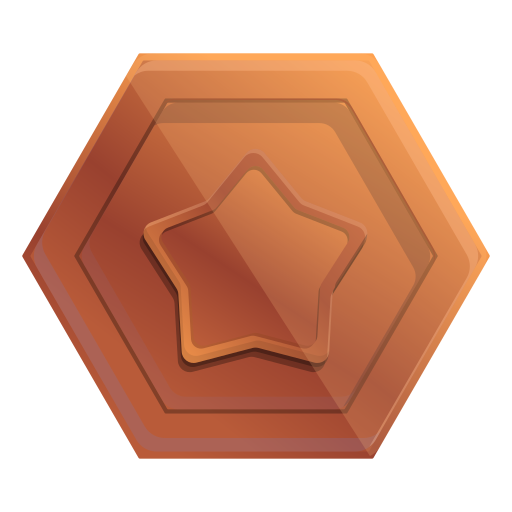
Your Path to WASSCE Success
Welcome to our Physics course! We recognize that the laws of physics can seem abstract and challenging, leaving many students feeling frustrated. But don’t worry, we’re here to help you make sense of it all. Together, we’ll break down complex concepts like mechanics, electricity, and magnetism through engaging discussions and hands-on experiments. Our goal is to spark your curiosity and build your confidence as you prepare for the WASSCE. Let’s explore the universe together and discover the incredible principles that govern our world to help you pass your exams.

Introduction and Overview of the Physics Course Content
This comprehensive physics course content is designed to give students a strong foundation in physics concepts, ranging from the basic principles of matter to more complex topics needed for their final examination. The course is structured into seven sections, each addressing a distinct area of physics, and is carefully sequenced to build upon foundational knowledge and progressively introduce more complex concepts.
Section 1: Introductory Physics and Properties of Matter
This section lays the groundwork for the study of physics. It introduces students to the nature and scope of physics, the meaning and measurement of physical quantities, and the structure of matter. Students will explore fundamental properties such as density, elasticity, and viscosity, and will review key concepts and formulas essential for solving basic physics problems. Past question reviews will help reinforce learning through practical application.
Section 2: Mechanics
Mechanics is a key area in physics and deals with the motion of objects and the forces that affect them. This section covers:
- Kinematics and Dynamics (the description and causes of motion)
- Forces, Pressure, and Energy (including mechanical work and power)
- Circular and Oscillatory motion, and Gravitation
- The deformation of solids under various loads. The section concludes with a comprehensive review of formulas and practice with past examination questions to strengthen problem-solving skills
Section 3: Thermal Physics
Thermal physics explores the behavior of matter under temperature changes. Students will learn how temperature is measured, understand the thermal properties of materials, study heat transfer (conduction, convection, and radiation), and apply these principles in calorimetry. Reviews and past questions ensure that learners grasp both theory and calculations.
Section 4: Waves
This section focuses on the behavior and properties of waves, particularly light and sound. Key topics include:
- Reflection and refraction of light
- Optical instruments and fiber optics
- Wave motion, sound, and the foundations of electromagnetic induction and alternating current (AC)
Section 5: Electricity and Magnetism
This section covers the behavior of electric charges and magnetic fields. Topics include:
- Electrostatics, capacitors, and DC circuit analysis
- Magnets, electromagnetism, and induction
- AC theory
Section 6: Atomic and Nuclear Physics
The section examines the structure of atoms and the phenomena that occur at the atomic and subatomic levels. Topics include:
- Atomic models, photoelectric effect, wave-particle duality
- Thermionic emission, cathode rays, X-rays, and nuclear energy
Section 7: Electronics
The final section introduces the basics of electronics, including:
- Semiconductor devices like P-N junction diodes and Bipolar Junction Transistors (BJTs),
- Digital electronics and Integrated Circuits (ICs)
Details of the Course Content
Section 1 : Introductory Physics and properties of matter
- Unit 1: Introduction to Physics
- Unit 2: Physical quantities
- Unit 3: Concept of matter
- Unit 4: Some properties of matter
- Unit 5: Review of key concepts and formulas
- Unit 6: Review of Past Questions
Section 2 : Mechanics
- Unit 1: Kinematics
- Unit 2: Dynamics
- Unit 3: Forces
- Unit 4: Pressure
- Unit 5: Energy
- Unit 6: Circular motion and Gravitation
- Unit 7: Oscillatory motion
- Unit 8 : Deformation of solids
- Unit 9: Review of key concepts and formulas
- Unit 10: Review of Past Questions
Section 3: Thermal Physics
- Unit 1: Temperature and its measurement
- Unit 2 : Thermal properties of matter and Calorimetry
- Unit 3 : Heat transfer
- Unit 4: Review of key concepts and formulas
- Unit 5: Review of Past Questions
Section 4 : Waves
- Unit 1: Reflection of light from plane and curved mirrors
- Unit 2: Refraction of light
- Unit 3: Basic Fiber optics
- Unit 4: Thin lenses and optical instruments
- Unit 5: Wave motion
- Unit 6: Sound
- Unit 7: Electromagnetic Induction
- Unit 8: Alternating Current (A.C.) theory
- Unit 9: Review of key concepts and formulas
- Unit 10: Review of Past Questions
Section 5: Electricity and Magnetism
- Unit 1: Electrostatics
- Unit 2: Capacitors
- Unit 3: Direct current circuit analysis
- Unit 4: Magnets
- Unit 5: Electromagnetism
- Unit 6: Electromagnetic Induction
- Unit 7: Alternating Current (A.C.) theory
- Unit 8: Review of key concepts and formulas
- Unit 9: Review of Past Questions
Section 6: Atomic and Nuclear Physics
- Unit 1: Models of the atom and atomic structure
- Unit 2 : Photoelectric effect and wave particle duality
- Unit 3: Thermionic emission, cathode rays and x- rays
- Unit 4: The nucleus and nuclear energy
- Unit 5: Review of key concepts and formulas
- Unit 6: Review of Past Questions
Section 7: Electronics
- Unit 1: Semi conductor P-N Junction diode
- Unit 2: Bipolar Junction Transistor (BJT)
- Unit 3: Digital electronics and Integrated Circuits(I.C)
- Unit 4: Review of key concepts and formulas
- Unit 5: Review of Past Questions
Course Assessment
- Quizzes and Assignments
- Group discussions and problem-solving exercises

Gold Package
Our one-year Physics program

Silver Package
Our six-month Physics program.

Bronze Package
Our three-month Physics program